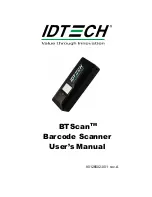
BioSIMKey - ADT60 Reference Manual
rev 1.0, April, 2002
Advanced Card Systems Ltd.
Page 5 of 26
3. FINGERPRINT
SCANNER
BioSIMKey is built around the TouchChip Silicon fingerprint sensor. It is a fast, reliable and
inexpensive fingerprint peripheral, which can be used to authenticate users of computers and
all kinds of information technology devices.
The TouchChip
device is suitable for applications such as desktop access control, network
security, Internet-based applications and commercial verification and identification systems. It
contains all the necessary biometric components: fingerprint sensing, image optimization and
matching. Application Program Interface (API) is also provided for easy integration into
applications and to save a lot of development time. (Please refer to Programmer’s Guide for
more information on API.)
TouchChip
active capacitive sensing provides a much higher immunity to parasitic effects
leading to a higher signal-to-noise ratio and the ability to capture a wider range of fingerprints
than competing technologies, such as passive capacitive sensing.
Typically there are two processes involved in a biometric application:
Enrollment:
Before the identity of an individual can be verified via his/her fingerprints, it is necessary to
capture one or several fingerprint samples. This process is called enrollment. The samples
are referred to as fingerprint templates and can be stored on a broad range of media such as
computer storage devices or smartcards.
Verification:
The verification process requires a user to verify his identity by placing his finger on the
fingerprint scanner sensor. The live fingerprint is compared with a stored template using a
matching algorithm in order to determine whether they represent the same set of fingerprint.
The matching result is then made available to the computer.
When using the fingerprint device, the security level is mainly governed by two parameters:
False Acceptance Rate (FAR):
FAR is the probability that a false sample matches with the original template previously
extracted from the subject’s fingerprint images during enrollment.
False Rejection Rate (FRR):
FRR is the rate at which the system incorrectly rejects a legitimate attempt to verify.






































